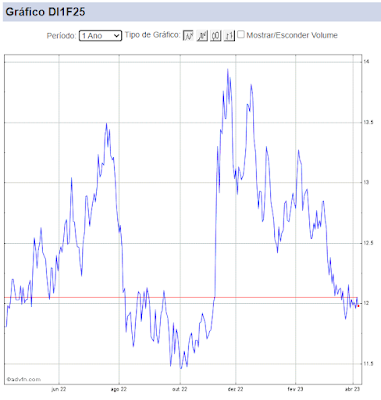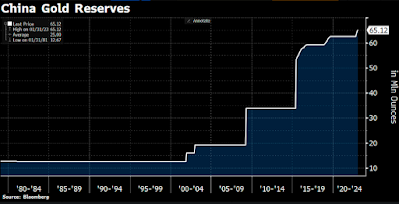Shutdown, Earnings Revisions & Espanha.
Me
perdoem pelo inglês do título, mas soa mais atrativo do que suas traduções em
português. Nada contra nossa língua, mesmo eu por várias vezes, talvez
diariamente, cometendo erros grotescos de gramática. Faz parte do jogo...
Ontem
comentei um pouco sobre o Brasil e seus ativos, em especial a curva local e
juros (https://mercadosglobais.blogspot.com/2019/02/italia-juros-e-inflacao-no-brasil.html).
Hoje
serei breve, apenas comentando alguns poucos eventos do final de semana.
Nos
EUA, as negociações em torno do orçamento chegaram a um impasse. Um novo “shutdown”,
ou fechamento do governo, deve ocorrer em breve. Estes eventos costumam ser
pontuais e de rápida solução, com pouco impacto econômico e sobre os preços dos
mercados. Contudo, desta vez, o problema está se estendendo e pode ter impacto
significativo sobre o crescimento. Além disso, ocorre em um momento ainda de
fragilidade do humor dos investidores.
Na
Espanha, a população foi a rua e a cena política ganha novos contornos. A situação
ainda é fluida, mas dado o que temos visto acontecer na Itália, é um ponto a se
monitorar. Estamos bastante preocupados com a situação econômica da Europa e questões
como essa não ajudam o cenário (vide aqui: https://www.bloomberg.com/news/articles/2019-02-10/spanish-premier-is-running-out-of-options-ahead-of-key-vote?srnd=premium-europe).
Voltando
aos EUA, o Morgan Stanley chamou a atenção para as revisões de resultados que
estamos vendo neste ciclo de divulgações. Somos mas negativos com as bolsas
globais ex-Brasil, especialmente no G3, como mostramos em nossa carta mensal há
5 dias atrás.
Além
do pano de fundo econômico que tenho alertado diariamente desde o ano passado,
agora vemos sinais concretos de uma piora no pano e fundo para os lucros
corporativos. Não achamos que será fácil gerar retornos em estratégias de “buy-and-hold”
como foi nos últimos 10 anos. Será cada vez mais importante os pontos de
entrada e saída, ou seja, as posições táticas, além da escolha correta dos
ativos e setores. Devemos ficar alertas!
Segundo
o Morgan Stanley:
Most important,
however, is the fact that earnings growth expectations have deteriorated
materially over the past few months. Strangely, I see much less
acknowledgement of this growth deterioration with everyone so focused on the
Fed and stock price trends. A big part of our equity strategy discipline is
listening to what the market is telling us, and we acknowledge that the recent
surge in price and breadth is a positive signal about the future.
However, earnings revisions have been some of the worst we’ve ever
observed in terms of breadth and velocity. Virtually every sector and
region of the world is seeing downward revisions, making it difficult to
explain them away as a temporary function of trade tensions and/or the
government shutdown in the US.
We have been calling for
an earnings recession in the US since last summer, when the consensus was still
forecasting close to 11% S&P 500 EPS growth for 2019. Starting in
early December, this same consensus began to fall sharply, and 1Q19 S&P 500
earnings are now expected to be down more than 1% year on year. Given the
severity and breadth of the revisions to date, I would not be surprised if
2Q and 3Q S&P 500 EPS growth also turn out to be negative on a year-on-year
basis. Therefore, I believe that the recent move in stocks is much more
about the Fed pivot and less about stocks telling us the trough is now.
Whether stocks can
advance sustainably from here will be determined by the depth and timing of
this trough in earnings growth. At this point, I think it’s too early to
determine either. Some have argued that this looks very similar to early 2016
with China stimulating, the Fed pausing, earnings revisions plummeting and
stocks rallying. While that’s true, 1Q16 was the fourth quarter in a row
of negative year-on-year growth whereas 1Q19 is the first negative growth
quarter. This makes the comparisons for the next several quarters much
more difficult today versus 1Q16, thereby increasing the chance for both a
deeper and later trough in growth than what is currently forecast. Our best
estimate at this point is for a trough in S&P 500 EPS growth in 2Q19 or
3Q19 somewhere between -5-10%Y. If we’re right, we should get a better
opportunity to add to equity risk over the next few weeks/months. In S&P
500 terms, we think that is closer to 2500 than 2700. With equity markets
having gone nowhere since the end of 2017, entry points have been critical to
generating positive returns. We think that will continue to be the case,
so price levels matter more than trend.
Enjoy your Sunday


Comentários
Postar um comentário